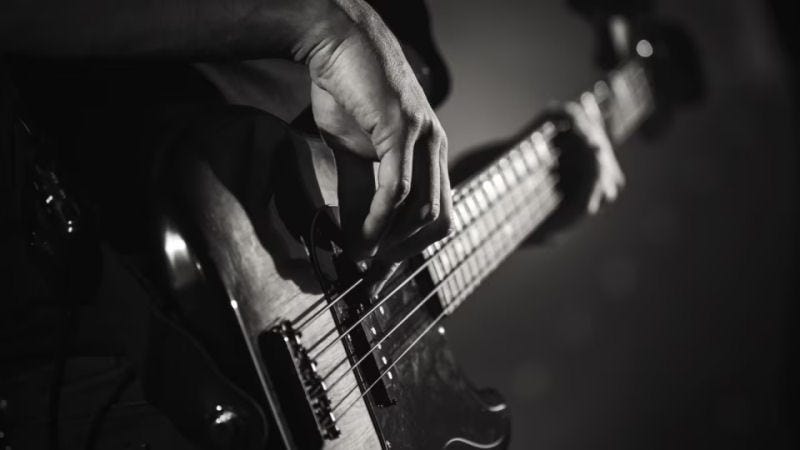The bass guitarist in any band has one job: “To bridge the gap between the drummer and the melody”. The bass guitarist gives the drummer a “tone”. Think of the bass guitar as a “stringed” drum set. The bass guitar is all about the feel of the heartbeat of a song - but you gotta know the notes too.
It just made sense to me.
I have been asked the following question hundreds of times: “Is the bass guitar easier to play than the regular guitar?” Well, honestly - the word “easier” is a relative term. To learn any musical instrument well, takes years of unconditional practice and unconditional commitment.
So, to answer the question, “No, it is not easier - just different.”
I’ve been practicing/playing the bass guitar since 1978. However, I started playing the guitar in 1976. What I learned from the guitar, I was able to transfer over to the bass guitar. In time, the bass guitar just made sense to me. The bass guitar eventually became my identity.
Just like anyone else, I still had to learn all of the notes on the entire fretboard - and know them cold. I learned how to recognize and play patterns and scales. I learned how to train my ears to listen for the lowest notes in a song - that were not always the root note. Sometimes, they were the fifth or maybe even the third. Regardless, I had to know where every note existed by name, location, and most of all - by feel.
Your Exercises.
The following diagrams are all of the notes on a four-string bass guitar - from the open strings to the twelfth fret.
This first diagram shows the location of all of the “natural notes”.
Practice memorizing/learning the location of all of these notes by playing and identifying/naming each note in the following order: F, C, G, D, A, E and B.
This second diagram shows the location of all of the “sharp notes”.
Practice memorizing/learning the location of all of these notes by playing and identifying/naming each note in the following order: F#, C#, G#, D# and A#.
This third diagram shows the location of all of the “flat notes”.
Practice memorizing/learning the location of all of these notes by playing and identifying/naming each note in the following order: Gb, Db, Ab, Eb and Bb.
Knowing all of these notes, their names and where they all exist on the entire fretboard, is arguably the most important lesson you will need to know in order to play and practice your bass guitar well.
If you would like to support my work, please consider a premium subscription that gives you all-access to everything on SoundHole (for just $5 per month or $50 per year):
Or you can send a one-time gift by buying me a $5.00 coffee, or two or three or...
Thank-you for your loyalty and support,
Dave








